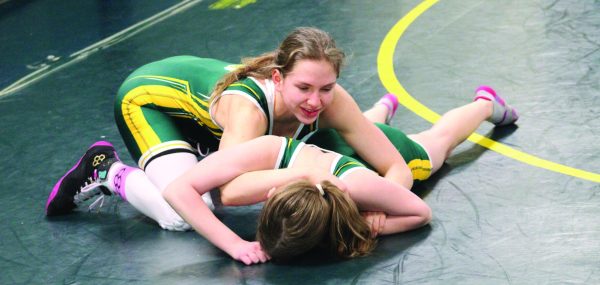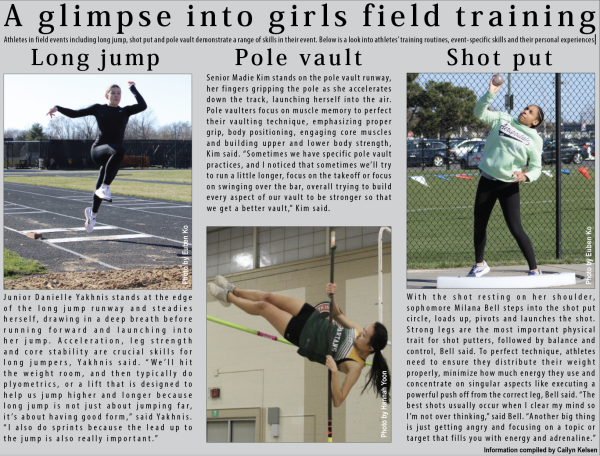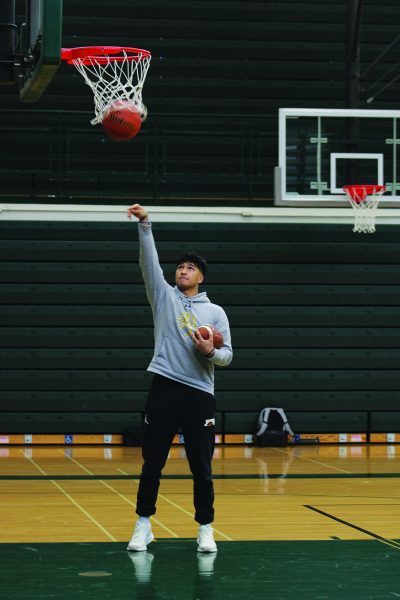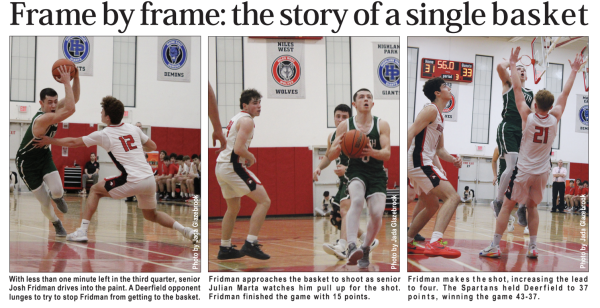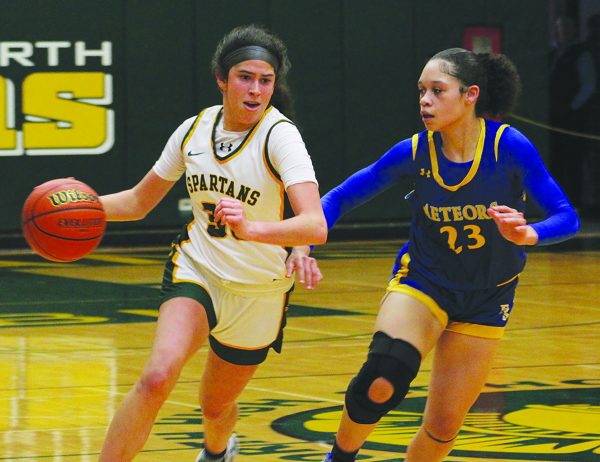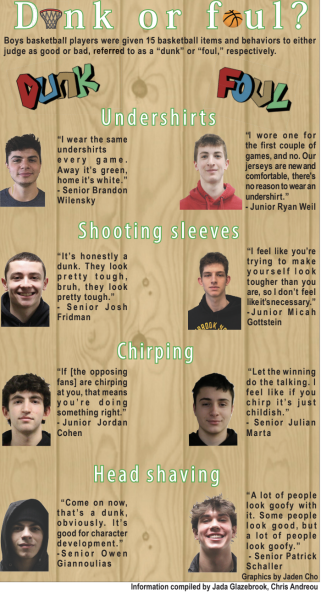GBN may move to CSL South due to realignment
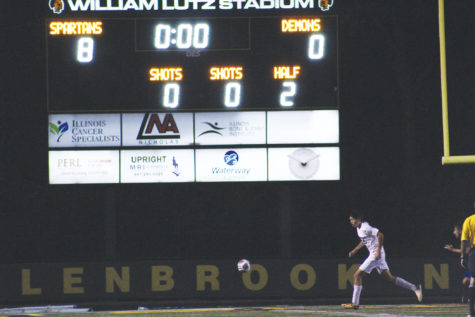
Photo by Hope Mailing
In response to the news that the Central Suburban League is planning to realign its divisions Robin Walker, girls swimming head coach, said he has a very simple message to his team: just keep swimming.
“Swim here, swim [there], we swim,” said Walker. “That’s what we do, so wherever they say we swim, my job is to get them ready to swim there.”
At the end of the 2016-2017 school year, athletic directors and principals from each CSL school participated in a vote that resulted in the decision to realign the conference’s divisions. The move could relocate all of Glenbrook North’s athletic programs from their current spot in the North division, which has been historically comprised of the six smallest schools in the conference, to the South division, which has contained the six largest schools. The realignment is planned to be implemented prior to the 2019-2020 school year.
CSL president Chris Livatino said the realignment is a way to “improve the overall level of competition within the Central Suburban League” and “maximize coin-toss games.”
According to Livatino, the realignment will be based on a point system which takes into account both school enrollment and a school’s “success factor,” a single number reflecting overall athletic performance.
The success factor will be derived from the 20 common sports played among CSL schools by awarding six points to the team that finishes first in each division, five points to the second place team, all the way down to one point for the last place team, he said. These points will be added up from each respective sport into a single number.
That number will then be multiplied by the proportion of a school’s enrollment to the sum of the total enrollment of all the schools within the division, Livatino said.
Using data from Oct. 2015 as an example, GBN’s success factor would be multiplied by 0.184 because it had an enrollment of 1,997 students compared to the 10,882 students overall in the North.
Each school’s points from the 2016-2017 and 2017-2018 school years will be added, and the team with the lowest point total in the South will be replaced by the team with the highest point total in the North before the 2019-2020 school year, Livatino said. This process will repeat itself with one school from each division swapping every three years.
According to Athletic Director John Catalano, even though the formula statistically allows for all 12 schools to change divisions, only four schools are likely to move. These schools include GBN and Highland Park, which would move from the North to the South due to their relatively high enrollments and historical success in the division, and Niles North and Niles West, which would move from the South to the North.
Catalano said the chance that GBN moves to the South over Highland Park is close to 50-50.
“Point wise, the parity between the schools in the North is so close that I don’t know what’s going to happen,” Catalano said.
Plans to realign have been discussed for a long time, but Waukegan’s exit from the conference following the 2015-2016 season and Vernon Hills’s subsequent admittance further increased talks of realignment. Vernon Hills entered the North because of their small enrollment while Niles North was moved from the North to the South to replace Waukegan and consequently struggled, Catalano said.
“At that time, I think what happened was people felt that it was unfair to Niles North even though it had been our rule and our way of doing business for 50 years,” Catalano said.
After the news of Waukegan’s exit came out in the spring of 2014, some of the principals in the conference directed the creation of a three-year task force with the goal of finding a way to increase the level of competition in each division, according to Catalano. The task force recommended the new method for realignment, which was agreed upon in a 7-5 vote by both the athletic directors and principals last May.
Catalano said the vote was the closest of any he had seen in his 19 years in the CSL, a worrying sign of divide in the conference. Furthermore, the turnover of six of 12 athletic directors and seven of 12 principals since the task force was originally initiated also contributes to his viewpoint of the decision being a “forced issue.”
“My biggest personal issue is that the reality is only four of the 12 schools have any likelihood of movement, and I feel that when a smaller number like that, one-third, [is] really affected by a rule, [then] that’s not a good rule,” Catalano said.
Livatino, also the Evanston athletic director, said he believes the rule will affect all schools in the conference by increasing the level of competition for the schools in the South, while it will allow some of the weaker schools in the North to be more competitive.
According to Catalano, he has had a “very difficult time” with the realignment because he worries about some programs if GBN moves to the South.
“[It] will force some of the programs that are struggling into a situation that they will not be able to handle, and that’s damaging.
“A school of our size, we have [around 2,000] kids, we have 30 athletic programs, … and so we’re not always going to have robust numbers in every level and be super competitive,” said Catalano. “What that will do then will further make that task of being competitive nearly impossible.”
According to Livatino, even though weaker programs in a school may struggle with a move from the North to the South, he believes the change will ultimately benefit the entire conference.
“It might mean [schools that move to the South] don’t win as many conference championships, but I do, without question, believe that it’s going to improve the overall competition level and make you stronger for the IHSA playoffs,” Livatino said.
Sophomore Quinn Sybert, who is a member of the football, wrestling and lacrosse teams, said teams will have to carry on as they always have in the past.
“It would be a big change, but no matter what division we’re in, … I know that [the competition] will probably be the same because the coaches will always prepare us for the games the same way,” Sybert said.
Walker said he will not change the way he coaches because of the realignment.
“Shift happens.
“The philosophy how I respond and react is the same,” said Walker. “If they say we’re moving, we need to get ready to move, but how we function should not be any different than how we prepare in this conference or that conference.”


